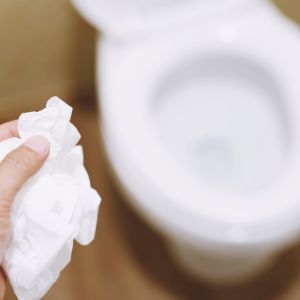5 Signs Your Office Is Using the Wrong Toilet Paper
Toilet paper might seem like a small detail in the workplace, but it has a big impact on comfort, hygiene, sustainability — and even your bottom line. Choosing the wrong type of toilet paper can lead to frequent complaints, increased waste, plumbing problems and poor staff morale.
Here are five clear signs your office is using the wrong toilet paper — and what to do about it.
1. Frequent Complaints About Quality
If employees are commenting on scratchiness, breakage, or "cheap-feeling" toilet paper, it’s time to reconsider your choice. Poor-quality paper may be cost-effective upfront but can reduce staff satisfaction and lead to overuse as people compensate for the lack of strength.
We explore this idea further in our related blog: Do Employees Notice What Toilet Paper You Use? Why It Matters for Kiwi Workplaces. In that article, we dive into how seemingly minor hygiene products can significantly affect employee perception, comfort, and morale — and how investing in the right supplies can support a healthier workplace culture.
 2. Toilets Are Constantly Getting Blocked
2. Toilets Are Constantly Getting Blocked
Low-grade toilet paper often doesn’t break down properly in commercial plumbing systems, especially in older buildings. This leads to recurring clogs, costly callouts, and frustrated staff.
Switching to septic-safe recycled or bamboo toilet paper — which dissolves more easily — is often a better choice in commercial settings.
3. You’re Replacing Rolls More Often Than You Should
Thin or poor-quality paper means people use more per visit, leading to faster roll consumption, more frequent refills, and more packaging waste.
Upgrading to a denser, 2-ply or bamboo toilet paper can reduce sheet usage and require fewer replacements — ultimately saving money and reducing environmental impact.
4. Your Business Has Eco Goals — But Your Toilet Paper Doesn’t Align
If you have sustainability targets or ESG commitments, using virgin pulp toilet paper undermines those efforts. Recycled and bamboo options are better aligned with green initiatives, reduce deforestation, and use fewer chemicals in production.
A report by the Natural Resources Defense Council (NRDC) reveals that many top-selling commercial toilet paper brands still rely heavily on unsustainable forestry practices.
For a breakdown of the key toilet paper types — including recycled, bamboo, and premium virgin pulp — and how they compare in terms of cost, comfort and environmental impact, check out our article: Bamboo, Recycled or Premium? Choosing the Best Toilet Paper for Your Office. It’s a comprehensive guide for New Zealand workplaces making smarter purchasing decisions.
5. Staff and Clients Are Bringing Their Own Supplies
If staff or clients are seen bringing in their own toilet paper, wipes, or tissue — it’s a major red flag. This indicates dissatisfaction with hygiene standards, and it reflects poorly on the workplace environment.
Listening to staff feedback and upgrading to a more comfortable or sustainable product shows you care about their wellbeing and experience.
What to Do Next: Smarter Toilet Paper Choices for NZ Workplaces
-
Test alternatives: Try a few products (e.g. recycled vs bamboo) and gather staff feedback
-
Check compatibility: Make sure your dispensers and plumbing can handle the paper type
-
Go eco: Choose FSC-certified, recycled, or bamboo options to meet both comfort and environmental standards
-
Buy commercial-grade: Designed for higher-traffic washrooms, these last longer and offer better value
Conclusion
If you’ve noticed any of these signs in your workplace, it’s time for a toilet paper upgrade. Better hygiene, improved morale and lower long-term costs all start with smarter choices — and that includes the basics.
Explore Insinc’s full range of commercial toilet paper, including eco-friendly bamboo and recycled options ideal for New Zealand businesses.
https://www.insinc.co.nz/toiletpapervarieties.html
Posted: Wednesday 29 October 2025


